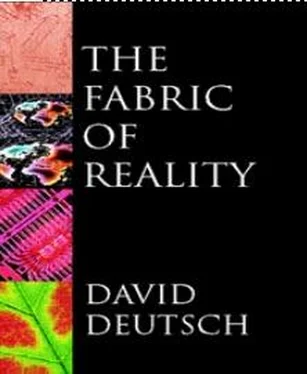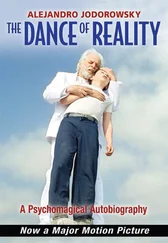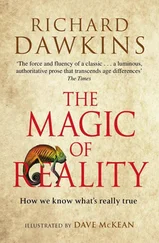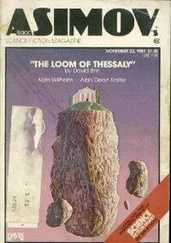David Deutch - The Fabric of Reality
Здесь есть возможность читать онлайн «David Deutch - The Fabric of Reality» весь текст электронной книги совершенно бесплатно (целиком полную версию без сокращений). В некоторых случаях можно слушать аудио, скачать через торрент в формате fb2 и присутствует краткое содержание. ISBN: , Жанр: Физика, Философия, на английском языке. Описание произведения, (предисловие) а так же отзывы посетителей доступны на портале библиотеки ЛибКат.
- Название:The Fabric of Reality
- Автор:
- Жанр:
- Год:неизвестен
- ISBN:0-7139-9061-9
- Рейтинг книги:4 / 5. Голосов: 2
-
Избранное:Добавить в избранное
- Отзывы:
-
Ваша оценка:
- 80
- 1
- 2
- 3
- 4
- 5
The Fabric of Reality: краткое содержание, описание и аннотация
Предлагаем к чтению аннотацию, описание, краткое содержание или предисловие (зависит от того, что написал сам автор книги «The Fabric of Reality»). Если вы не нашли необходимую информацию о книге — напишите в комментариях, мы постараемся отыскать её.
The Fabric of Reality — читать онлайн бесплатно полную книгу (весь текст) целиком
Ниже представлен текст книги, разбитый по страницам. Система сохранения места последней прочитанной страницы, позволяет с удобством читать онлайн бесплатно книгу «The Fabric of Reality», без необходимости каждый раз заново искать на чём Вы остановились. Поставьте закладку, и сможете в любой момент перейти на страницу, на которой закончили чтение.
Интервал:
Закладка:
This method allows us to specify in advance an arbitrarily complicated environment whose simulation requires any finite amount of computation, and to experience that environment at any subjective speed and level of detail that our minds are capable of assimilating. If the requisite calculations are too numerous for the computer to perform within the subjectively perceived time, the experience will be unaffected, but the user will pay for its complexity in terms of externally elapsed time. The user might emerge from the virtual-reality generator after what seemed subjectively like a five-minute experience, to find that years had passed in physical reality.
A user whose brain is switched off, for however long, and then switched on again will have an uninterrupted experience of some environment. But a user whose brain is switched off for ever has no experiences at all from that moment on. This means that a program which might at some point switch the user’s brain off, and never switch it on again, does not generate an environment for the user to experience and therefore does not qualify as a valid program for a virtual-reality generator. But a program which, eventually, always switches the user’s brain back on causes the virtual-reality generator to render some environment. Even a program which emits no nerve signals at all renders the dark, silent environment of perfect sensory isolation.
In our search for the ultimate in virtual-reality we have strayed a very long way from what is feasible today, or even from what is on any foreseeable technological horizon. So let me stress again that for our present purposes technological obstacles are irrelevant. We are not investigating what sorts of virtual-reality generator can be built, or even, necessarily, what sorts of virtual-reality generator will ever be built, by human engineers. We are investigating what the laws of physics do and do not allow in the way of virtual reality. The reason why this is important has nothing to do with the prospects for making better virtual-reality generators. It is that the relation ship between virtual reality and ‘ordinary’ reality is part of the deep, unexpected structure of the world, which this book is about.
By considering various tricks — nerve stimulation, stopping and starting the brain, and so on — we have managed to envisage a physically possible virtual-reality generator whose repertoire covers the entire sensory range, is fully interactive, and is not constrained by the speed or memory capacity of its computer. Is there anything outside the repertoire of such a virtual-reality generator? Would its repertoire be the set of all logically possible environments? It would not. Even this futuristic machine’s repertoire is drastically circumscribed by the mere fact of its being a physical object. It does not even scratch the surface of what is logically possible, as I shall now show.
The basic idea of the proof — known as a diagonal argument — predates the idea of virtual reality. It was first used by the nineteenth-century mathematician Georg Cantor to prove that there are infinite quantities greater than the infinity of natural number (1, 2, 3…). The same form of proof is at the heart of the modern theory of computation developed by Alan Turing and others in the 1930s. It was also used by Kurt Gödel to prove his celebrated ‘incompleteness theorem’, of which more in Chapter 10.
Each environment in our machine’s repertoire is generated by some program for its computer. Imagine the set of all valid programs for this computer. From a physical point of view, each such program specifies a particular set of values for physical variables, on the disks or other media, that represent the computer’s program. We know from quantum theory that all such variables are quantized, and therefore that, no matter how the computer works, the set of possible programs is discrete. Each program can therefore be expressed as a finite sequence of symbols in a discrete code or computer language. There are infinitely many such programs, but each one can contain only a finite number of symbols. That is because symbols are physical objects, made of matter in recognizable configurations, and one could not manufacture an infinite number of them. As I shall explain in Chapter 10, these intuitively obvious physical requirements — that the programs must be quantized, and that each of them must consist of a finite number of symbols and can be executed in a sequence of steps — are more substantive than they seem. They are the only consequences of the laws of physics that are needed as input for the proof, but they are enough to impose drastic restrictions on the repertoire of any physically possible machine. Other physical laws may impose even more restrictions, but they would not affect the conclusions of this chapter.
Now let us imagine this infinite set of possible programs arranged in an infinitely long list, and numbered Program 1, Program 2, and on. They could, for instance, be arranged in ‘alphabetical’ order with respect to the symbols in which they are expressed. Because each program generates an environment, this list can also be regarded as a list of all the environments in the machine’s repertoire; we may call them Environment 1, Environment 2, and so on. It could be that some of the environments are repeated in the list, because two different programs might in effect perform the same calculations, but that will not affect the argument. What is important is that each environment in our machine’s repertoire should appear at least once in the list.
A simulated environment may be limited or unlimited in apparent physical size and apparent duration. An architect’s simulation of a house, for example, can be run for an unlimited time, but will probably cover only a limited volume. A video game might allow the user only a finite time for play before the game ends, or it might render a game-universe of unlimited size, allow an unlimited amount of exploration and end only when the user deliberately ends it. To make the proof simpler, let us consider only programs that continue to run for ever. That is not much of a restriction, because if a program halts we can always choose to regard its lack of response as being the response of a sensory-isolation environment.
Let me define a class of logically possible environments which I shall call Cantgotu environments, partly in honour of Cantor, Gödel and Turing, and partly for a reason I shall explain shortly. They are defined as follows. For the first subjective minute, a Cantgotu environment behaves differently from Environment 1 (generated by Program 1 of our generator). It does not matter how it does behave, so long as it is, to the user, recognizably different from Environment 1. During the second minute it behaves differently from Environment 2 (though it is now allowed to resemble Environment 1 again). During the third minute, it behaves differently from Environment 3, and so on. Any environment that satisfied these rules I shall call a Cantgotu environment.
Now, since a Cantgotu environment does not behave exactly like Environment 1, it cannot be Environment 1; since it does not behave exactly like Environment 2, it cannot be Environment 2. Since it is guaranteed sooner or later to behave differently from Environment 3, Environment 4 and every other environment on the list, it cannot be any of those either. But that list contains all the environments that are generated by every possible program for this machine. It follows that none of the Cantgotu environments are in the machine’s repertoire. The Cantgotu environments are environments that we can’t go to using this virtual-reality generator.
Clearly there are enormously many Cantgotu environments, because the definition leaves enormous freedom in choosing how they should behave, the only constraint being that during each minute they should not behave in one particular way. It can be proved that, for every environment in the repertoire of a given virtual-reality generator, there are infinitely many Cantgotu environments that it cannot render. Nor is there much scope for extending the repertoire by using a range of different virtual-reality generators. Suppose that we had a hundred of them, each (for the sake of argument) with a different repertoire. Then the whole collection, combined with the programmable control system that determines which of them shall be used to run a given program, is just a larger virtual-reality generator. That generator is subject to the argument I have given, so for every environment it can render there will be infinitely many that it cannot. Furthermore, the assumption that different virtual-reality generators might have different repertoires turns out to be over-optimistic. As we shall see in a moment, all sufficiently sophisticated virtual-reality generators have essentially the same repertoire.
Читать дальшеИнтервал:
Закладка:
Похожие книги на «The Fabric of Reality»
Представляем Вашему вниманию похожие книги на «The Fabric of Reality» списком для выбора. Мы отобрали схожую по названию и смыслу литературу в надежде предоставить читателям больше вариантов отыскать новые, интересные, ещё непрочитанные произведения.
Обсуждение, отзывы о книге «The Fabric of Reality» и просто собственные мнения читателей. Оставьте ваши комментарии, напишите, что Вы думаете о произведении, его смысле или главных героях. Укажите что конкретно понравилось, а что нет, и почему Вы так считаете.












